Asus ZenBook S16 review:powerful, light, and accurate in the majority of situations.
Asus ZenBook S16 is a powerful, robust, and fashionable laptop with an AMD Ryzen AI chipset. It has premium features and can deliver up to 50 TOPS NPU. The laptop has some fantastic features and specs for Rs 1,49,990, but is it worth the price? Let's see what this BlogyHub review reveals.
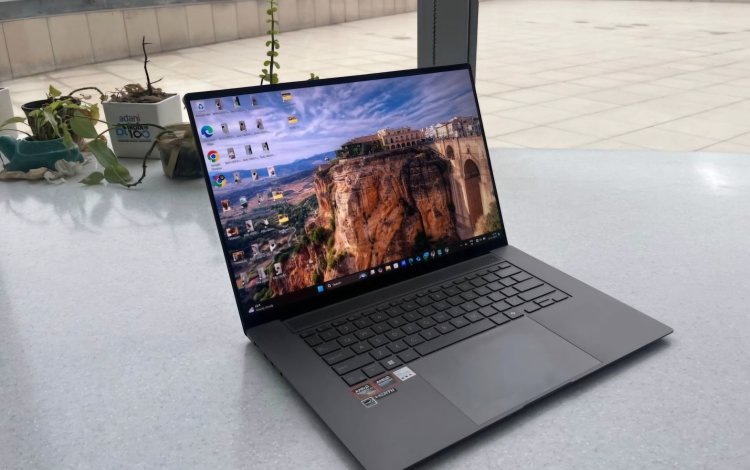
The Asus ZenBook S16 is the first CoPilot+ PC with an AMD Ryzen AI processor from the firm. Although the device's look is identical to that of its predecessor, the ZenBook S14, its specifications and functions are much improved. With AMD's recently released Ryzen AI 9 HX 370 CPU, the ZenBook S16 promises to improve AI performance and everyday workloads. Does the Asus ZenBook S16, which costs Rs 1,49,900, have a strong chipset, an ultra-thin profile, and a 3k OLED display? This review will help us find out.
Asus ZenBook S16: The best parts
The ZenBook S14 and the Asus ZenBook S16 share a similar design aesthetic. The laptop's lid has an inventive Ceraluminum coating, which is a combination of ceramic and aluminum.
The laptop has a high-end, matte appearance thanks to this material, which is also long-lasting. With a weight of only 1.5 kg, it is notable for being incredibly portable and perfect for those who are constantly on the go. For the past two weeks, the laptop has been my main tool for work. This implies that I always have it with me, even when I take the Metro to work.
It even went with me to Bangalore for a recent work trip.
I always felt comfortable carrying the smartphone with me, whether I was traveling every day or taking a lengthier flight to another place.
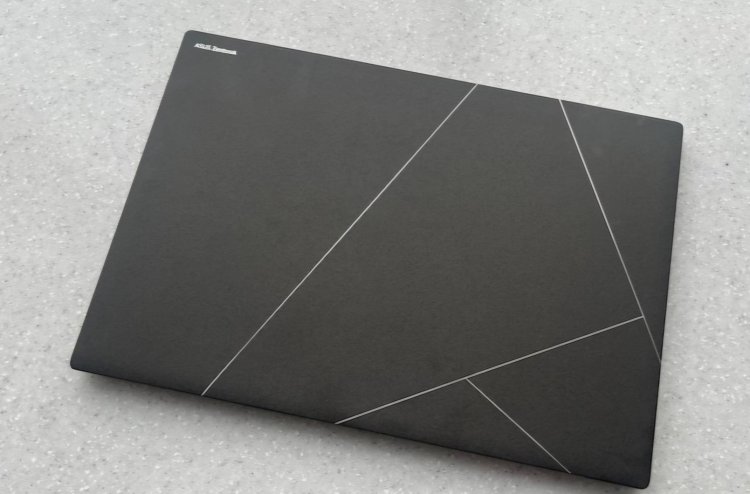 The ultra-thin lid of the Zenbook S16 is another noteworthy feature of its construction. It feels solid even though it is only a few millimeters thick. Additionally, it has a sturdy hinge mechanism that makes it simple to open the lid with just one hand.
The ultra-thin lid of the Zenbook S16 is another noteworthy feature of its construction. It feels solid even though it is only a few millimeters thick. Additionally, it has a sturdy hinge mechanism that makes it simple to open the lid with just one hand.
Also Read: Best 10 5G Tablets in 2024: Unrivaled Connectivity & Performance
The keyboard's design is likewise good, with reasonable key spacing. Also, the keys provide quick feedback. The sound of the keys clicking is not very loud. At least it wasn't anything like a mechanical keyboard.
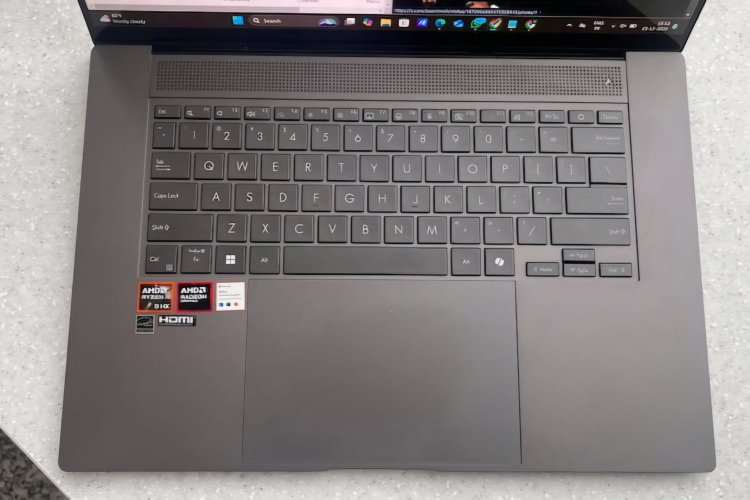
Asus claims that the ZenBook S16's mouse pad is 40% larger than its predecessor, and the ergonomic pad, which sits just beneath the keyboard, is now larger than ever. The design of the ZenBook S16 is excellent; it is portable, lightweight, and strong.
The laptop's display offers an equally satisfying experience. The massive 16-inch 3K OLED screen of the Asus ZenBook S16 has a refresh rate of 120 Hz. With its vibrant and clear colors, the display is a visual feast. The display's 400 nit brightness (which peaks at 500 nits in HDR mode) makes it visually appealing indoors.
Read this also: Best acer laptop for college students, and more Details
Multitasking is a breeze because to the large display. It didn't feel cluttered even after dividing the screen in half. Moreover, this laptop has been a pleasure for binge-watching Christmas films. However, that isn't it. It's a whole entertainment package thanks to the speakers. The ZenBook S16 has an amazing audio system.
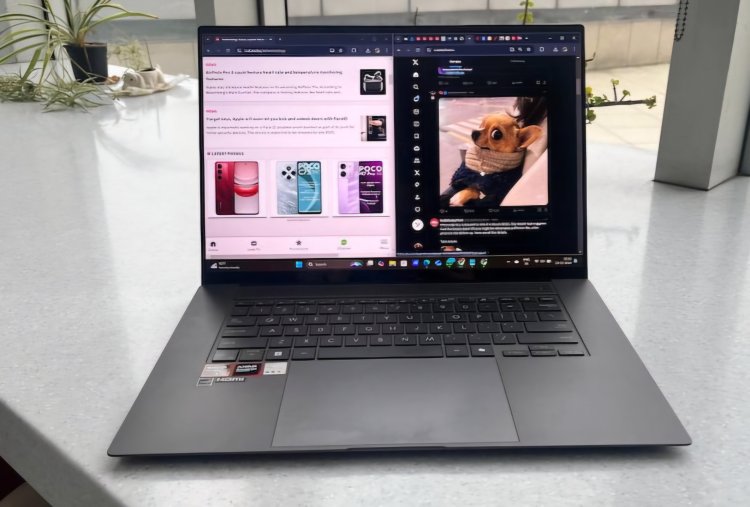 Its touch display is the pinnacle of its user-friendly design. It's easier to use with the smooth touch, but I usually use a mouse when working on a laptop. Tasks like file management, online browsing, and creative endeavors are made simple by the touch interface's smooth and simple navigation. With a refresh rate of 120 Hz, the touch screen responds quickly and makes interactions easier.
Its touch display is the pinnacle of its user-friendly design. It's easier to use with the smooth touch, but I usually use a mouse when working on a laptop. Tasks like file management, online browsing, and creative endeavors are made simple by the touch interface's smooth and simple navigation. With a refresh rate of 120 Hz, the touch screen responds quickly and makes interactions easier.
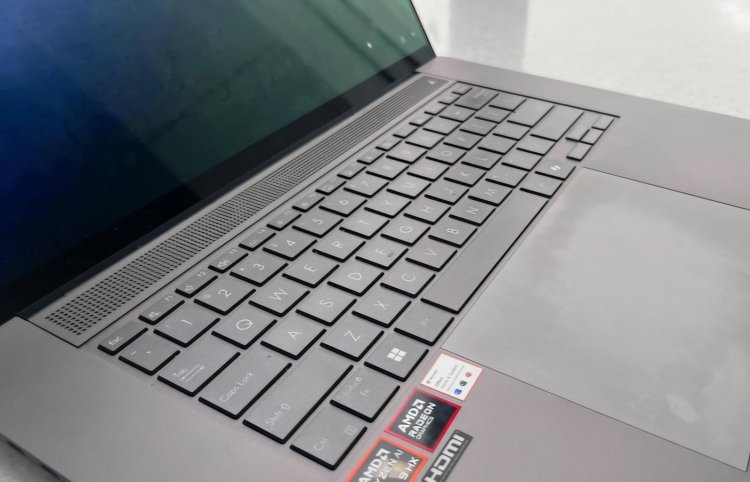 In terms of performance, the laptop is a neat blend of design and usefulness. It has more than 3,500 CNC-machined cooling vents in a geometric grille design. This creative configuration guarantees outstanding thermal efficiency, efficiently cooling the gadget without compromising functionality. It does not heat up easily for a computer with a strong AMD Ryzen AI chipset, which is reportedly capable of providing three times the processing capacity of earlier AMD laptop processors.
In terms of performance, the laptop is a neat blend of design and usefulness. It has more than 3,500 CNC-machined cooling vents in a geometric grille design. This creative configuration guarantees outstanding thermal efficiency, efficiently cooling the gadget without compromising functionality. It does not heat up easily for a computer with a strong AMD Ryzen AI chipset, which is reportedly capable of providing three times the processing capacity of earlier AMD laptop processors.
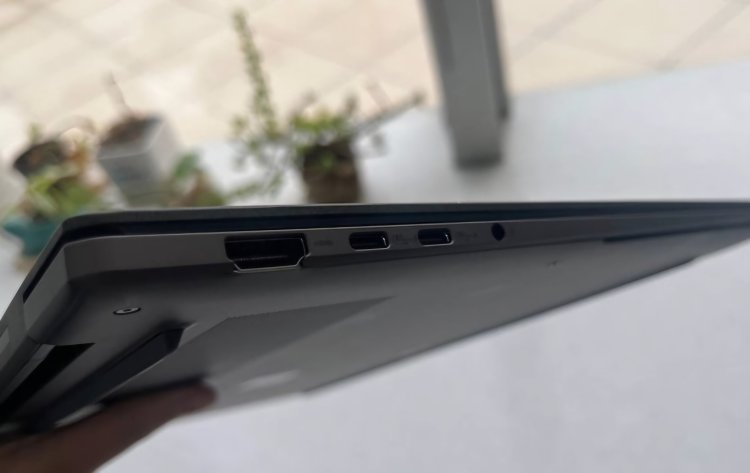 Thus far, the ZenBook S16 has proven to be an excellent device. All jobs are completed without any issues. Even when I was using two browsers at once and opened more than ten tabs, it did not give me any trouble throughout the course of two weeks.
Thus far, the ZenBook S16 has proven to be an excellent device. All jobs are completed without any issues. Even when I was using two browsers at once and opened more than ten tabs, it did not give me any trouble throughout the course of two weeks.
The ZenBook S16, according to Asus, has a maximum neural processing capacity of 50 tops (trillion operations per second). That's a really astounding figure, but what does it actually mean? Before we move into that, here are some additional results from our own laptop benchmark test.The Zenbook S16 received a multicore score of 12,305 on Geekbench and a Cinebench score of 503. Based on benchmark scores, the AMD Ryzen AI 9 HX 370 processor is a fierce rival to the Apple M3 chip.
Also read: Best Laptops Under Rs 40,000 for Power on a Budget.
Large, potent CPUs, however, also require large amounts of battery. According to Asus, a day may be comfortably covered by the ZenBook S16's 78 Whr battery. We can conclude from evaluating the device that Asus' claim is accurate. After fully charging, I used the ZenBook S16 for six hours in a row. I use Google Docs, open many tabs, switch between work and Apple Music, watch YouTube videos, skim through X articles, and more as part of my everyday routine. The laptop's battery was still only 30% charged after everything.
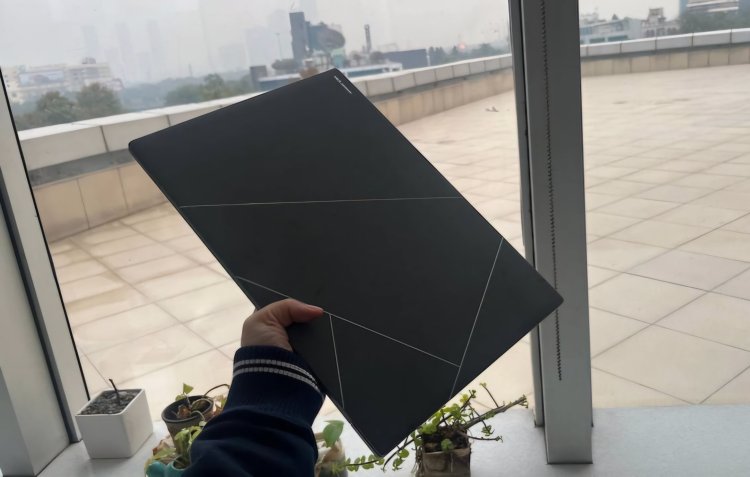 It is true that the battery will drain more quickly when doing intensive chores, but for me, a full charge lasted me the entire workday. As previously stated, the Zenbook S16 is impressive in many ways, but it is undoubtedly not flawless. Let's examine some of the device's shortcomings.
It is true that the battery will drain more quickly when doing intensive chores, but for me, a full charge lasted me the entire workday. As previously stated, the Zenbook S16 is impressive in many ways, but it is undoubtedly not flawless. Let's examine some of the device's shortcomings.
Asus ZenBook S16: Drawbacks
The ZenBook S16 inherits some of the shortcomings of the ZenBook S14 in addition to its design language. The login process is a little slow because there is no fingerprint sensor. I had trouble using the face-lock biometric technology on the Asus ZenBook S16.
On paper, a laptop would be better off with a face-lock. When you sit in front of the screen, it should ideally unlock. However, the biometric of the ZenBook S16 is erratic. It unlocks in a matter of seconds at times, but frequently I have to adjust my face and still finish up inputting the password.
Also Read: Jio made millions of Android users happy, launched a cheap tracking device JioTag Go
Another problem I had was that, even though I really liked the display, the shiny finish significantly reflects light. I found myself modifying the screen frequently over the testing period to increase visibility, particularly when working outside.
 Additionally, fingerprints and smudges are very likely to appear on the glossy surface. For someone who loved the touch screen capability, this limitation made the whole viewing experience less enjoyable.
Additionally, fingerprints and smudges are very likely to appear on the glossy surface. For someone who loved the touch screen capability, this limitation made the whole viewing experience less enjoyable.
The third problem I had was a considerable slowdown in the laptop's charging process. Although the battery life of the ZenBook S16 is excellent, there is a noticeable lag when the charger is plugged in, and the screen briefly goes black for a few seconds. The ZenBook S16 also supports Type-C charging. This disruption while use was very apparent.
Verdict: Should you buy the Asus ZenBook S16?
The Asus ZenBook S16 is a good option if you want a laptop with excellent performance capabilities, fashionable design, and a good battery backup. The list of advantages is far longer than the list of disadvantages. Although the laptop costs Rs 1,49,900, it has all the high-end features and specifications. It provides excellent performance, making Apple's M3 MacBook Air a fierce rival.
Also Read:
Best 10 5G Tablets in 2024: Unrivaled Connectivity & Performance
Google Pixel 10 will have a big change, special details leaked before launch













